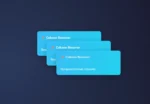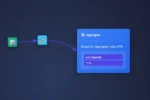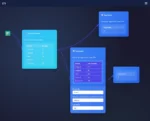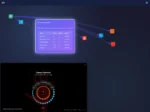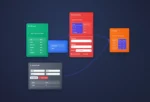
by tyler garrett | Jun 28, 2025 | Data Visual
In today’s rapidly transforming digital landscape, navigating regulatory compliance is no longer a matter of manual checklists and static reports. Businesses require dynamic, intuitive, and automated analytics solutions that not only streamline compliance efforts but also identify and mitigate risks proactively. Enter regulatory compliance dashboards—a sophisticated yet accessible blend of data engineering, actionable insights, and innovative risk assessment capabilities. Leveraging advanced data engineering consulting services can revolutionize the way your business approaches compliance. In this blog, we’ll demystify how technology-driven dashboards empower stakeholders with real-time, automated risk evaluations, ensuring more accurate, measurable, and agile compliance management.
Understanding the Importance of Regulatory Compliance Dashboards
In an environment increasingly governed by stringent regulations and rapidly changing industry standards, businesses need more than reactive methods to maintain compliance; they must adopt proactive strategies. Regulatory compliance dashboards play a key strategic role by pulling together large volumes of complex compliance data and translating it into meaningful, digestible insights. By employing strong data visualization techniques, these dashboards provide real-time overviews and actionable information that helps organizations quickly identify potential compliance threats or deviations.
Automating compliance assessments through these dashboards not only reduces the manpower traditionally required for manual reporting tasks but also significantly improves accuracy and accountability. Since data integrity is paramount in compliance, your business benefits immensely from timely error detection and corrected measures offered by automated monitoring. Enterprises that leverage dashboards for compliance tracking gain a distinct competitive advantage by efficiently focusing their strategic resources on growth rather than administrative oversight.
Moreover, stakeholders can customize dashboards to show critical KPIs aligned with their specific business objectives, compliance regulations, and risk management strategies. By effectively visualizing compliance risks, businesses can swiftly address potential issues, thus significantly reducing compliance costs, financial risks associated with regulatory infractions, and reputational damage.
The Role of Real-Time Data in Compliance and Risk Assessment
When it comes to compliance and risk management, timing matters. Businesses that rely on outdated data or periodic manual assessments expose their organization to considerable vulnerabilities. This is where the importance of streaming data and real-time analytics shines through. Incorporating technologies adept at handling large volumes of data quickly, such as outlined in our previous blog on handling streaming data at scale, becomes imperative to maintain regulatory adherence effectively.
Real-time compliance dashboards provide up-to-the-minute perspectives on your organization’s compliance status and relevant risks, empowering you to respond proactively, rather than reactively, to emerging issues. With instantaneous risk feedback, these dashboards allow your teams to implement mitigation actions before minor inefficiencies escalate into significant compliance breaches.
Also, leveraging advanced data processing techniques, such as those described in our post on processing window strategies for streaming analytics, becomes crucial in compliance scenarios. These analytic advancements enable organizations to pinpoint exactly when and where a compliance event or risk originated, thus enhancing transparency and clarity throughout regulatory processes and audits. As a result, real-time data transforms compliance strategies from static afterthoughts into live operational components that optimize organizational growth instead of hindering it.
Enhancing Efficiency with Automation and Risk Scoring
Automation within compliance dashboards isn’t merely about reducing manual effort. It’s about embedding systematic processes in identifying anomalies, predicting potential breaches, and assigning risk scores to proactively prioritize interventions. Automating compliance validation and risk scoring achieves scalability, accuracy, and transparency—key drivers of operational excellence. Companies can leverage advanced analytic frameworks, such as the techniques discussed in our article impact analysis automation for data pipeline changes, to ensure smooth incorporation of adjustments and enhancements in their dashboards.
With automated assessments, businesses benefit from consistent risk evaluation methodologies. Misalignment or subjectivity present in manual evaluations are significantly reduced, making risk assessments more dependable and transparent for regulatory stakeholders. Further, by employing predictive modeling and automated scoring metrics, your IT and compliance teams can shift from firefighting unexpected compliance issues to actively preventing potential breaches, saving considerable resources in the long term.
Utilizing intelligent pattern recognition and machine learning methodologies further enhances the risk scoring process. The integration of technologies such as those detailed in our article about machine learning pipeline design for production enables organizations not only to automate risk flagging but also refine predictions continually through the feedback loop generated by real-time assessments. This results in a self-optimizing compliance system, continually adapting and improving, reducing costs, and enhancing compliance accuracy across the enterprise.
Lightweight Models and Knowledge Distillation for Scalable Dashboards
To successfully manage compliance across large or distributed organizations, scalability and performance become critical elements. As dashboards grow, so too do the data processing requirements. Adopting streamlined approaches like those featured in our previous piece on knowledge distillation techniques for lightweight dashboard models becomes essential.
Through knowledge distillation, complex machine learning models and algorithms can be compressed into simplified yet effective analytics solutions for your compliance dashboards. Lightweight, distilled models improve dashboard responsiveness, reduce processing time, and enhance accessibility even on limited resources environments. Regardless if it’s executives accessing high-level compliance summaries or dedicated compliance teams drilling deeply into granular reports, a distilled analytical method ensures quick and intuitive access to critical insights and recommended actions.
The benefits extend beyond faster visualizations and analytics. Implementing lightweight dashboard models also reduces backend operational costs associated with computational resources, infrastructure, and energy, making regulatory compliance monitoring itself more sustainable and cost-effective. Strategic reliance on streamlined analytics solutions supports optimal decision-making capability at scale and enables rapid deployment or changes to reflect shifting regulatory requirements and risk realities.
Addressing Data Integrity: Identifying and Managing Orphaned Compliance Data
A common pitfall in compliance analytics revolves around orphaned or unused data—data assets that become disconnected or improperly maintained, potentially compromising the accuracy of compliance analyses. Identifying and managing orphaned data is therefore vital, and can pose significant challenges if not handled strategically.
Leveraging insights shared in our orphaned data detection and management framework article ensures your analytics team maintains a robust data integrity pipeline. Dashboards equipped with automated detection algorithms pinpoint orphaned data swiftly, providing transparent visibility into what’s causing incomplete or inconsistent data feeds in your compliance analyses. Through these automated controls, regulatory compliance dashboards become self-monitoring tools, proactively tracking not just enterprise risks but the integrity and validity of data underlying critical regulatory reports.
Fostering transparency, these automated systems alert stakeholders immediately when orphaned data conditions arise, creating actionable tasks to address the issue strategically before regulatory compliance assessments are compromised. Consequently, organizations maintain higher trustworthiness and accuracy in compliance reporting—improving overall system reliability and regulatory audit readiness.
Implementing Regulatory Compliance Dashboards: Best Practices and Strategic Value
Successful implementation of automated regulatory compliance dashboards goes beyond choosing technology. A strategic approach must encompass clear alignment of business objectives, collaboration with data engineering experts, and adoption of industry best practices. Effective implementation sees compliance dashboards not merely as reporting tools, but as strategic enablers for growth, innovation, and competitive advantage.
Stakeholder involvement becomes critical in defining user-centric dashboards that genuinely add value within daily operational workflows. Regular iterative refinement processes, including addressing changing regulatory standards and enhancing risk assessment methodologies, keep your compliance solutions dynamic and relevant. Engaging specialized expertise, such as the insights gained from data engineering consulting in Austin, Texas, ensures your dashboards adhere to industry-leading practices and leverage cutting-edge advancements in data analytics.
Your compliance dashboards also evolve as performance-enhancing tools—potentially driving entire analytics innovations within your organization. Demonstrating a proactive and transparent approach towards regulatory compliance earns trust not only among regulators but customers, partners, and investors. Embracing automated, meaningful, and insightful dashboard-centric compliance assessments positions your business as an agile, responsible, and innovation-focused player in your sector.
Implementing sophisticated, automated regulatory compliance dashboards is not merely about risk mitigation; it’s about strategically positioning your company for sustainable success and unlocking innovation at scale.
Thank you for your support, follow DEV3LOPCOM, LLC on LinkedIn and YouTube.

by tyler garrett | Jun 23, 2025 | Data Visual
In the rapidly evolving landscape of telecommunications, understanding the flow of data has become critical to maintaining competitive advantage. Your networks generate vast and complex volumes of data every moment, with hidden patterns holding the keys to superior performance, efficiency, and reliability. Network traffic visualization offers telecommunications providers and IT leaders the ability to uncover these hidden gems—illuminating the underlying dynamics of connectivity, optimizing resource allocation, and enhancing customer satisfaction. By diagnosing congestion, mapping traffic trends, and predicting potential network failures through intelligent visualization tools, your organization can stay up-to-date and strategically ahead of demand. Let’s explore how visualizing telecommunications network traffic can unlock exponential value for your decision-making, laying the foundation for data-driven innovation and breakthroughs in telecom analytics.
The Importance of Understanding Network Traffic Patterns
Today’s telecommunications networks host a continuously escalating number of devices and users who expect seamless connectivity and instant access to information. As network loads increase, accurately capturing and interpreting traffic data becomes crucial not only for operational stability but also for maintaining a superior consumer experience. Traffic visualization transforms this raw data into meaningful insights that expose underlying business-critical patterns, allowing telecom providers to eliminate bottlenecks, optimize bandwidth allocation, and provide stable network experiences consistently. Well-executed visualization is fundamental: it takes granular and complicated data and makes it understandable for decision-making executives and technical strategists alike.
Recognizing unusual patterns or spikes in network usage using sophisticated visualization techniques helps organizations quickly identify potential cybersecurity threats or suspicious activities, such as DDoS attacks or data breaches. Visual analytics allow telecom providers to respond proactively, instigating rapid interventions to mitigate risks. Additionally, through detailed trend analysis, telecom analysts can identify growth areas, potential network weaknesses, and predict future load projections with reliable accuracy—creating a strategic advantage and ensuring that telecommunication infrastructure stays a step ahead of customer needs.
With network traffic visualization, telecommunications decision-makers gain clarity. They can actively manage network resources, prioritize upgrade investments efficiently, and promptly detect issues before they escalate into costly downtime. By investing in network visualization analytics, telecom operators leverage their greatest asset—their data—to maximize value and enhance their competitive edge in today’s fast-paced digital ecosystem.
Leveraging Real-Time Traffic Visualization for Proactive Decision-Making
Modern telecom companies must navigate ever-increasing demands for rapid, reliable connectivity. Real-time network traffic visualizations deliver immediate insights that empower telecommunications managers to make informed and proactive decisions. Instead of relying on historic data alone—which often becomes obsolete due to sudden shifts in data demand—real-time visualizations provide continuous monitoring, capturing current events and irregularities as they unfold. With real-time analytics, telecom providers instantly spot unusual spikes, sudden increases in congestion, or abrupt traffic drops that might signal network outages or disruptions.
Real-time visualization dashboards seamlessly integrate with other analytical processes and data systems. For instance, building a responsive dashboard interface using frameworks such as Streamlit and Apache Kafka provides telecommunications stakeholders instant visibility into their network performance. Learn more about this integration approach from our recent article on Building a Real-Time Dashboard with Streamlit and Kafka. Incorporating these real-time capabilities into your analytics infrastructure ensures high availability, minimized downtime, and reduced operational incidents, significantly improving the end-user experience.
Additionally, detailed real-time analysis supports resource allocation strategies, enabling telecom managers to dynamically reposition bandwidth or reassign network capacity based on shifting usage trends. Armed with up-to-the-second visibility into their infrastructure, telecom organizations can drastically reduce latency, remove performance roadblocks, and improve overall network reliability.
Advanced Techniques for Enhanced Visualization and Analytical Accuracy
Sophisticated visualization software and advanced analytical methods are elevating telecommunications network traffic analysis to unprecedented heights. Utilizing artificial intelligence (AI) and machine learning (ML) techniques within your analytics pipeline can dramatically boost accuracy, simplify complex datasets, and provide predictive insights for better planning. Network providers increasingly leverage advanced algorithms to detect correlations or anomalies hidden from manual inspection through traditional visualization methods.
These advanced techniques help mitigate risks posed by inference attacks on sensitive data—a critical concern when visualizing and publishing telecom datasets. Explore methods to safeguard sensitive information in-depth by reading our article on Inference Attack Prevention in Published Datasets. Coupling sophisticated analytics with data security best practices ensures organizations can confidently utilize and share data visualizations safely without compromising security compliance.
Furthermore, telecom operators benefit significantly from automated data testing strategies integrated into their analytic processes. Testing automation helps achieve data integrity, ensuring visualization results accurately reflect actual network states. Our detailed overview of this topic, Automated Data Testing Strategies for Continuous Integration, provides essential knowledge for telecom companies seeking greater analytical reliability.
Building Comprehensive Visualization Capabilities for Customer Insight
Telecommunications traffic contains invaluable insights into customer behavior, preference, and loyalty. By visualizing traffic and customer interactions across telecom networks, businesses can build comprehensive identity graphs, which allow highly personalized and tailored customer engagement. To quickly master identity graphs, telecom strategists can reference our resource on Identity Graph Construction for Customer Data Integration. These visualizations unlock a new level of precision in targeted marketing campaigns and improve customer retention analytics, significantly boosting the bottom-line.
Effective visualization capabilities enable telecom providers to respond dynamically to changing consumer demands. By clarifying customer preferences and needs, telecom companies can design effective business strategies and customer-oriented service experiences, reinforcing client satisfaction and brand loyalty. Clear visibility of customer data flows allows telecom carriers to compete on customer experience, proactively anticipating customer requirements and delivering unparalleled service.
Additionally, future-proofing your telecom analytics system requires staying abreast of emerging trends and shifting data analysis paradigms. For an insightful outlook on future data trends, explore our research-focused guide titled The Future of Data: Predictions for the Next 5 Years.
Establishing Robust Notification Systems for Proactive Traffic Management
As visualization systems uncover valuable traffic insights, robust and automated notification systems enable telecom providers to respond immediately to actionable insights. Notification systems trigger alerts when certain thresholds are met, congestion points arise, or network disruptions are detected—ensuring rapid troubleshooting and enabling quicker recovery times, minimizing the impact on end users. Prioritize setting up strategic notification channels to deliver critical data reports instantly to stakeholder devices and decision-makers’ inboxes.
Streamlining communication and transparency by using automated notification frameworks enhances overall customer experience and lowers operational costs. Dive deeper into implementing efficient notifications by exploring our detailed guide on Notification Systems for Pipeline Status and Alerts. The integration of proactive notification capabilities guarantees telecommunications organizations stay informed, reducing issue detection and remediation latency, increasing network uptime, and contributing to stronger client trust and satisfaction.
Intelligent notifications extend network visualization effectiveness beyond static dashboards into real-time operational environments, creating streamlined, continuous communication channels between telecom operations teams, executive leadership, and network field technicians. Facilitating rapid internal coordination ensures immediate, action-oriented insights, enhancing overall telecom agility and resilience.
Empowering Telecom Providers Through Advanced Visual Analytics
In a hyper-connected world, robust visualization and analysis of telecom network traffic no longer represent optional capabilities—they’ve become essential strategic assets. High-performing telecom organizations relying on expert visualization analytics can seamlessly adapt to emerging trends, proactively predict customer needs, identify potential threats promptly, and deploy their infrastructure more intelligently. Now is the time to revolutionize your analytics strategy and unlock the capability visual networks enable.
As specialists in data analytics and innovation, our experienced team provides end-to-end solutions leveraging industry-leading tools to help telecom businesses thrive. Learn more about our tailored approach and how we leverage analytics and visualization to drive strategic telecom initiatives on our Power BI consulting services page. Future-proof your telecommunications network management capabilities, enrich customer understanding, and ensure your enterprise continuously stays ahead of competitors with advanced data visualization and powerful analytics.
Thank you for your support, follow DEV3LOPCOM, LLC on LinkedIn and YouTube.

by tyler garrett | Jun 19, 2025 | Data Visual
In today’s rapidly evolving transportation landscape, autonomous vehicles are no longer a distant vision but a tangible reality reshaping our roads. As fleets of self-driving cars increasingly navigate our cities, they generate vast amounts of sophisticated data that hold the keys to safer navigation, optimized routes, and efficient city planning. Leveraging advanced analytics and visualization techniques—two of our key areas at Dev3lop, LLC—we enable innovative organizations to transition smoothly into this transformative automotive era. By harnessing autonomous vehicle analytics and bringing this data to life through compelling visual storytelling, decision-makers can make informed strategic choices, optimize urban mobility, and build environments prioritizing safety, sustainability, and accessibility. Let’s explore how embracing visual analytics can powerfully drive the autonomous vehicle industry forward.
The Explosion of Data in Autonomous Vehicles
Self-driving cars mark the beginning of an unprecedented era in transportation, simultaneously capturing and processing enormous volumes of data in real-time. Equipped with diverse sensor types including LIDAR, radar, cameras, and ultrasonic sensors, staying operational demands hyper-fast connectivity and intelligent data interpretation. Each vehicle produces terabytes of data daily, a window into the driving environment that includes pedestrian behavior, vehicular traffic flow, road conditions, and unforeseen incidents. The volume and complexity of this data present significant analytical challenges—but also enormous opportunities.
At Dev3lop, our expertise in data analytics positions us to meet these challenges head-on. Autonomous vehicle analytics require robust infrastructures capable of ingesting, processing, and analyzing data efficiently. Implementing solutions like idempotent processing in data pipelines ensures reliability and consistency in high-stakes real-time computations. Our deep understanding of data engineering methodologies—such as the ones explained in our adversarial robustness in automated data analysis article—helps organizations effectively mitigate risks in self-driving car systems.
Moreover, smart analytics open pathways to collaborative urban planning efforts. Utilizing this granular data, city planners and automobile manufacturers can gain deeper insights into traffic patterns and transportation needs, making urban environments more sustainable. As highlighted in our recent write-up on data analytics for improving urban sustainability, analytics-driven urban planning can foster resilient, thriving cities built for both humans and autonomous machines alike.
The Crucial Role of Data Visualization for Autonomous Vehicles
Vast volumes of data generated by autonomous vehicles become truly valuable only when transformed into clearly understandable, actionable insights. Enter advanced data visualization: a strategic tool capable of translating complex data streams into intuitive and accessible visual stories. Clear visualization capabilities empower decision-makers across industries, enhancing their ability to interpret real-time data streams accurately to inform critical policy decisions, product development strategies, and emergency response mechanisms.
Effective visualization also dramatically improves data accessibility within organizations, democratizing insights for stakeholders across a range of technical expertise. In line with inclusive design principles, visualizations must ensure universal accessibility, as we discussed extensively in our piece on creating accessible data visualizations for all users. Clear visual storytelling ensures that diverse teams—from executives and engineers to city planners—can collaborate effectively, avoiding silos and achieving more holistic solutions to complex challenges.
With advanced visualization tools, vehicle manufacturers can clearly communicate the interplay among sensor outputs, algorithmic decisions, traffic scenarios, and driver interactions in a cohesive manner. Real-time dashboards that interpret sensor accuracy, predict route efficiency, or reveal road hazard trends provide invaluable intelligence. Decision-makers are thus armed with detailed visual context, enabling informed strategic actions to leverage opportunities or mitigate risks swiftly. Unlocking these insights positions both automobile manufacturers and civic planners for future-proof innovation in transportation while enhancing public trust in autonomous systems.
Advanced Analytics Techniques Supporting Self-Driving Cars
The analytical methods and tools supporting autonomous vehicles extend beyond basic data processing techniques into the realm of predictive modeling, machine learning, and artificial intelligence. At Dev3lop, our specialization in advanced analytics empowers clients to leverage collected sensor data to build sophisticated predictive models aiding collision avoidance, traffic optimization, and infrastructure improvement.
Predictive analytics methods enhance the performance and reliability of autonomous vehicles by accurately anticipating potential hazards and streamlining real-time decision-making capabilities. By refining machine learning algorithms, car manufacturers and developers significantly reduce risk and improve vehicle efficiency, pushing toward higher levels of autonomous driving capabilities such as Level 4 and Level 5 autonomy.
Advanced data analytics also significantly influence how self-driving cars interact with infrastructure. Beyond vehicle functionality, analytics-driven insights can guide city planners in addressing pressing issues such as urban congestion and affordable housing. Our recent article exploring the role of data analytics in addressing Austin’s housing affordability crisis illustrates how analytics makes direct contributions toward constructing smarter cities where autonomous systems and human communities can coexist harmoniously.
Real-Time Data Visualization: Transforming Transportation Safety
Real-time visualization solutions create powerful opportunities to enhance vehicle safety and public transparency about autonomous vehicle operations. With dashboard systems updating dynamically, operators receive immediate feedback on system performance, environmental threats, and real-time responses of self-driving cars. Advanced analytics coupled with real-time visualization empowers rapid identification and resolution of anomalies or safety issues before they become severe complications.
Transparency in autonomous vehicle operations is critical in gaining widespread public confidence in this emerging technology. Visual tools can provide clear communication of operational statuses and system capabilities to non-technical stakeholders, including regulatory agencies and the general public. Moreover, real-time visualizations showing vehicle positioning and interaction with surrounding entities redefine monitoring capabilities, ensuring autonomous cars perform safely even in dynamic scenarios.
Utilizing platforms like Microsoft SQL Server is essential for handling large-scale, real-time data visualization solutions. Our professional Microsoft SQL Server Consulting expertise equips organizations with the infrastructure needed to realize the benefits of live data visualization, bringing safer transportation solutions to markets and communities faster and with greater transparency.
Collaboration and Future Innovation through Autonomous Vehicle Data
Advances in autonomous vehicle analytics and visualization depend heavily upon collaboration. Data scientists, software developers, car manufacturers, municipality leaders, urban planners, and academics must collectively engage in cross-disciplinary cooperation. By fostering robust professional networks—as emphasized in our blog, the art of networking with data science professionals—organizations unlock powerful opportunities for future innovation driven by collective intelligence.
Collaborative platforms and shared databases make it possible to pool anonymized autonomous vehicle data, creating massive repositories of information to inform effective planning, policy decision-making, and innovation across transportation ecosystems. When stakeholders actively share insights, learnings, and visual analytics techniques, cities become smarter, safer, and more sustainable environments for people and autonomous vehicles alike.
The insights achieved through advanced visual analytics hold potential far beyond transportation alone—they fundamentally alter urban landscapes, inform city governance, and impact human wellbeing. Realizing these ambitious visions necessitates a commitment to open dialogue, continuous learning, transparent communication, and proactively designing for both efficiency and human-centered outcomes.
Visualizing the Road Ahead: A Strategic Approach to Autonomous Analytics
Navigating the complexities of self-driving vehicles and their associated massive datasets requires a strategic approach to data analytics and visualization. Working with skilled analytical teams helps organizations ensure transparency, robustness, accessibility, and reliability within their analytical architectures while reducing risks associated with technological disruption.
As industry leaders in analytics, Dev3lop remains committed to pioneering innovation that aligns with future transportation visions and urban development priorities. We recognize that mastering visualization of autonomous vehicle analytics is crucial—not just to bring clarity but also to drive next-generation insights that transform major sectors, setting the stage for a smarter and more connected future.
Empowered with advanced analytics and visualization methods, organizations can confidently steer through technical complexities, achieving strategic Initiative alignment and staying agile. When autonomous vehicle analytics are visualized effectively, stakeholders grasp complex dynamics at a glance, positioning themselves at the forefront of an innovation-rich autonomous driving future.
Thank you for your support, follow DEV3LOPCOM, LLC on LinkedIn and YouTube.

by tyler garrett | Jun 18, 2025 | Data Processing
The digital era has ushered in enormous volumes of data, pulsating through the veins of modern organizations as the lifeblood of informed decision-making. Yet not all data shares an equal weight—some is rich with actionable insights, while other datasets offer little more than background noise. As data experts, we recognize central measures capable of discerning this critical difference through advanced analytical methods. One such measure is entropy metrics—a powerful tool for quantifying information content within datasets. By grasping what entropy metrics entail and applying them strategically, organizations can focus their analytical capacities precisely where it counts, fostering true innovation and maintaining agility in today’s fast-paced market landscape. In this article, we’ll demystify entropy metrics, illuminate their strategic roles, and explore practical methods for integrating them into your analytics workflow.
What Are Entropy Metrics?
Entropy metrics originate from information theory—a mathematical field dedicated to quantifying and communicating information. In essence, entropy provides a numerical measure of uncertainty or randomness within data. High entropy indicates greater unpredictability and variability, signifying abundant informational value. Conversely, datasets exhibiting lower entropy possess more predictability; while they may seem useful due to their stability, they could potentially indicate redundancy or limited capacity for revealing novel insights.
To illustrate this: consider an overly predictable dataset containing repeated values or structured, monotonous entries. Its entropy metric would approach a near-zero value, signifying the absence of meaningful diversity. In contrast, highly dynamic, unpredictable datasets with varied contents and complex interactions return high entropy values, indicating a wealth of informational potential awaiting further analysis.
When adopting entropy analyses into real-world data management practices, understanding variability serves as the cornerstone. This approach not only helps prioritize resource allocation for maximal impact but also facilitates optimized data transformation by applying strategic techniques like just-in-time transformation.
Why Entropy Metrics Are Crucial in Today’s Landscape
In our era of big data analytics and hyper-scale computing environments, decision-makers strive to distill clarity from massive data streams. Organizations frequently find themselves overwhelmed, mistakenly assuming every byte of captured data contains indispensable intelligence. In reality, extracting insightful intelligence hinges strongly upon distinguishing relevant information from extraneous noise.
Entropy metrics allow organizations to efficiently pinpoint high-value datasets for deeper analysis, safeguarding analytical resources, such as computational bandwidth and human capital, from wasteful processing. For example, industries facing potential fraud and security threats benefit significantly by employing entropy analyses to highlight sudden shifts or irregularities. Integrating entropy measurements complements advanced strategies—such as real-time monitoring and early alert systems—addressed in our article covering methods of stopping fraudulent activity before it happens.
Especially significant for financial companies inundated with data, entropy metrics can help leadership circumvent pitfalls detailed in our discussion of finance industry data over-reliance. By identifying data sets of greatest value within massive transaction records or customer activity logs, financial institutions can steer clear from unproductive analytical paths, focusing critical attention solely where actionable insights can emerge.
Applying Entropy Metrics: Techniques and Practical Examples
Entropy calculations rely heavily on probability distributions across dataset values. One sophisticated yet accessible entropy metric is Shannon entropy, which quantifies the unpredictability associated with variable values. For textual data, this might involve analyzing the frequency of certain words or characters; for numerical data, entropy calculations often focus on variable probability distributions and patterns within continuous or categorical data.
In practice, advanced analytics teams integrate entropy analyses alongside automated workflows to continuously assess data quality, structural soundness, and consistency. Take data integration efforts, which benefit significantly as greater entropy in data dimensions may indicate potential inconformity or merging challenges. Professionals can proactively address these issues through techniques discussed in our overview of dimension conformity enforcement, allowing organizations to enhance trustworthiness and consistency in their integrated datasets.
Similarly, when dealing with file-based data such as CSV files, entropy metrics quickly expose files with severe encoding or formatting issues. Organizations that follow our strategies on handling dirty CSV files and encoding issues find it beneficial to implement entropy indicators on incoming files. These indicators serve as potential criteria for flagging needed corrective interventions, reducing downstream risk and complexity.
Entropy as a Pillar of Data Security and Integrity
An important strategic consideration is utilizing entropy metrics as part of broader information security and integrity frameworks. Entropy assessments naturally align with discovery efforts intended to highlight sensitive information and data elements holding strategic importance. Datasets registering unusually high entropy levels could indicate heightened sensitivity and the presence of personally identifiable information (PII), which should be governed stringently using practices explained in our guide on automated data sensitivity classification using machine learning.
In addition, entropy metrics critically support cryptographic and hashing applications. Security methodologies frequently draw on entropy measures to establish robust randomness standards in cryptographic keys and to validate data fingerprints against tampering. Our insight into fingerprints and checksums as methods for ensuring data integrity underscores the crucial role entropy plays in preventing data breaches and securing assets within modern organizational settings.
Employing entropy indicators in conjunction with dynamic access control mechanisms, such as discussed in our article on dynamic data masking for role-based data access, ensures that information variability is tightly controlled, helping organizations meet stringent compliance guidelines and mitigate cybersecurity vulnerabilities proactively.
Turning Entropy Metrics into Strategic Advantage
Realizing strategic advantage from entropy metrics requires embedding them at the core of your analytical pipeline. Organizations typically begin with targeted baseline measurements, establishing normal entropy levels for different categories of data. Over time, deviations or fluctuations in these established entropy baselines signal emerging patterns, alerting analysts to investigate further.
Additionally, visualizing entropy metrics can be vital for clear communication across teams and stakeholders. Effective visualizations highlight entropy variations, exposing patterns typically invisible to manual inspection. To master the creation of such intuitive, impactful visuals, review our recommended guidelines in the article detailing ten tips for creating effective data visualizations. Investments in visualization translate entropy measurements from abstract statistical concepts into tangible, actionable images, accelerating informed decisions among leadership and technical teams alike.
Moreover, firms utilizing integrated data solutions—for instance, Procore’s comprehensive data resources—should consider incorporating entropy analyses into their API design practices to gain even deeper insights. Firms seeking assistance integrating Procore into their analytical stack can directly benefit from our specialized Procore API consulting services.
Conclusion: Harnessing Entropy Metrics for Information Mastery
In the realm of big data analytics, entropy metrics stand out as practical, strategic measures empowering businesses to prioritize analysis, enhance data integration, enforce effective data governance, and secure their most vulnerable organizational assets. Understanding entropy doesn’t just bring clarity to your datasets—it paves new pathways to advanced analytics, predictive intelligence, and strategic foresight. Embrace entropy measurements to maintain confidence in decision-making and gain a competitive edge in today’s information-driven market.
At Dev3lop, our passion centers around fostering your organization’s analytic excellence. Whether you’re facing challenges in data integrity, sensitivity, visualization strategies, or integration complexities—entropy metrics offer clarity amidst chaos. Let these powerful tools help shape your future-ready organization through decisive insights and ongoing innovation.
Tags: Entropy Metrics, Data Analytics, Data Integration, Information Theory, Data Security, Strategic Data Management

by tyler garrett | Jun 18, 2025 | Data Processing
In today’s rapidly growing data landscape, understanding the scale and uniqueness of your data points can often feel like counting the stars in the night sky—seemingly endless, complex, and resource-intensive. Businesses navigating petabytes of diverse data cannot afford inefficient methods of data analysis and need rapid insights to maintain competitive edge. Enter cardinality estimation—a powerful technique that provides decision-makers quick, reliable approximations of unique data values without exhaustive computation. As experts in innovative data technologies, we at Dev3lop specialize in empowering businesses to leverage advanced analytical methods like cardinality estimation to enhance data-driven strategies. Let’s dive deeper into the intricacies of cardinality estimation and its beneficial applications for effective decision-making.
Understanding Cardinality Estimation and Its Importance
In data analytics and data management, cardinality refers to the number of unique elements in a dataset. Accurately counting unique occurrences is crucial in numerous data-driven use cases, such as crop yield prediction analysis, customer segment analysis, and network security monitoring. Traditionally, exact counts of unique items—also known as distinct counts—were feasible when datasets were small and computations relatively straightforward. However, with today’s vast and continuously streaming data, achieving exact counts becomes computationally expensive and time-consuming.
Cardinality estimation techniques allow us to obtain sufficiently accurate approximations of distinct values with significantly lower resources, improving both the speed and scale of processing large datasets. The estimation algorithms markedly enhance real-time analytics capabilities where immediate insights are paramount—such as fraud detection, security event management, and online customer engagement metrics. By understanding the strategic importance of cardinality estimation, stakeholders gain clearer perspective for data-driven strategies and agile business decisions.
Effective understanding and implementation of these estimation techniques help organizations streamline their data processing pipelines, creating measurable efficiencies across the data lifecycle. As our clients often recognize through our AI agent consulting services, improvements in cardinality estimation accuracy directly translate into better data management practices, faster decisions, and optimized costs.
The Algorithms Behind Cardinality Estimation
HyperLogLog Algorithm
Among advanced cardinality estimation techniques, HyperLogLog (HLL) is prominently utilized. Developed to efficiently approximate distinct counts within large-scale datasets, HLL uses sophisticated probabilistic methods leveraging hashing functions to represent data in extremely compact, memory-efficient structures. With predictable accuracy and confidence intervals, HyperLogLog provides remarkably precise cardinality estimations, enabling confident decision-making even when exact numbers prove resource-intensive.
The visual representation and clearer comprehension of data distribution methods like the violin plot visualization may complement HyperLogLog-based insight, as it clearly showcases distribution aspects that contribute directly to analytical accuracy and deeper insights into data distributions. Compared to simpler estimation methods, HLL algorithms are notable in handling large streaming datasets, with unique advantages in scalability, accuracy, and minimal computational overhead.
Linear Counting Algorithm
Linear Counting is another established algorithm used for cardinality estimation, suitable particularly for datasets with low to moderate cardinalities. It achieves estimations by leveraging bitmaps to represent the presence or absence of hashed unique values. While efficient and relatively reliable for smaller or moderate-scale datasets, Linear Counting may lose accuracy concerning larger datasets—especially where cardinality significantly increases.
In practice, savvy analytics engineers and data strategists sometimes employ hybrid approaches, combining Linear Counting primarily for lower cardinality scenarios and HyperLogLog for large-scale or rapidly streaming datasets. Effective data integration and ETL management practices help organizations efficiently pre-process and choose suitable algorithms based on real-time requirements, dataset characteristics, and processing SLAs.
Cardinality Estimation Use Cases Across Industries
E-Commerce and Customer Behavior Analysis
In the highly competitive world of e-commerce, cardinality estimation techniques help businesses quickly understand how many unique customers engaged with various products or promotional campaigns. Accurate analysis translates into deeper insights on customer behavior, preferences, and loyalty patterns, helping decision-makers effectively strategize data-driven improvements for customer relationships and retention strategies.
By applying timely analytics derived from cardinality algorithms, businesses can inform strategies aimed at enhancing customer experiences and satisfaction, optimizing data-driven marketing budgets, and personalizing promotional offers across targeted customer segments.
Cybersecurity Monitoring and Event Correlation
Effective cybersecurity management involves monitoring vast volumes of event logs generated each day. Cardinality estimation helps enterprises quickly approximate unique events, IP addresses, vulnerabilities, and other indicators of interest. When paired with powerful data sharing and exchange patterns such as those discussed in cross pipeline data sharing, teams can rapidly identify significant security threats and anomalies without delays, enhancing real-time cybersecurity response capabilities and preventing breaches proactively.
Advanced cardinality estimation algorithms simplify anomaly detection in real-time streaming data scenarios, where identifying unique data patterns and trends rapidly is critical. Stream processing technologies have greatly matured, allowing efficient management through optimized scalability of streaming data handling and analysis.
Implementing Cardinality Estimation Successfully
To gain strategic value from cardinality estimation, organizations must clearly understand their analytics goals, data characteristics, and data processing SLAs. Identifying appropriate estimation algorithms ensures computational resources are optimized towards insights that matter most. Furthermore, clarity in visualization—guided by principles addressed in selecting appropriate data visualization chart types—helps stakeholders accurately understand and interpret cardinality estimation results.
Implementing cardinality estimation effectively demands clear performance measurement frameworks to track data pipeline performance accurately. At Dev3lop, we regularly advise our clients regarding the importance of defining and measuring pipeline performance SLAs, to ensure cardinality estimations match business objectives consistently.
Establishing accurate expectations about potential errors in estimation techniques is essential. Leaders should align analytical insights gained through cardinality estimation with strategic business outcomes, ensuring clarity about estimation accuracy limitations and associated margins of error at all levels of decision-making processes.
The Future Ahead: Innovation and Cardinality Estimation
Looking forward, as data volumes exponentially grow—so too will the importance of efficient cardinality estimation techniques. Innovation in artificial intelligence and machine learning, along with advances in probabilistic data structures, will continue elevating estimation accuracy, performance, capabilities, and speed. Companies that proactively leverage innovative solutions, such as our specialized AI consulting offerings, will stay positioned at the forefront of technology-driven decision-making.
Additionally, cardinality estimation techniques feed into broader analytics methodologies like anomaly detection, recommendation systems, and predictive analytics. As advancements like generative AI, Explainable AI, and specialized AI agents become more prevalent, expect further integration and complementary utilization of estimation algorithms within these advanced analytical workflows.
At Dev3lop, we continue to stay ahead of these technology trends and innovations. Our skilled consulting team recognizes cardinality estimation as crucial to gaining rapid, meaningful insights from immense and diverse data assets. As data challenges evolve, so does our mission to deliver cutting-edge data analytics and innovation practices.
Ready to enhance your data capabilities strategically with cardinality estimation and innovation expertise? Connect with our experts and let’s discuss how efficiently handling unique data values can empower your organization’s analytics strategy today.
Tags: Cardinality Estimation, HyperLogLog, Data Analytics, Big Data, Data Management, Real-time Analytics














